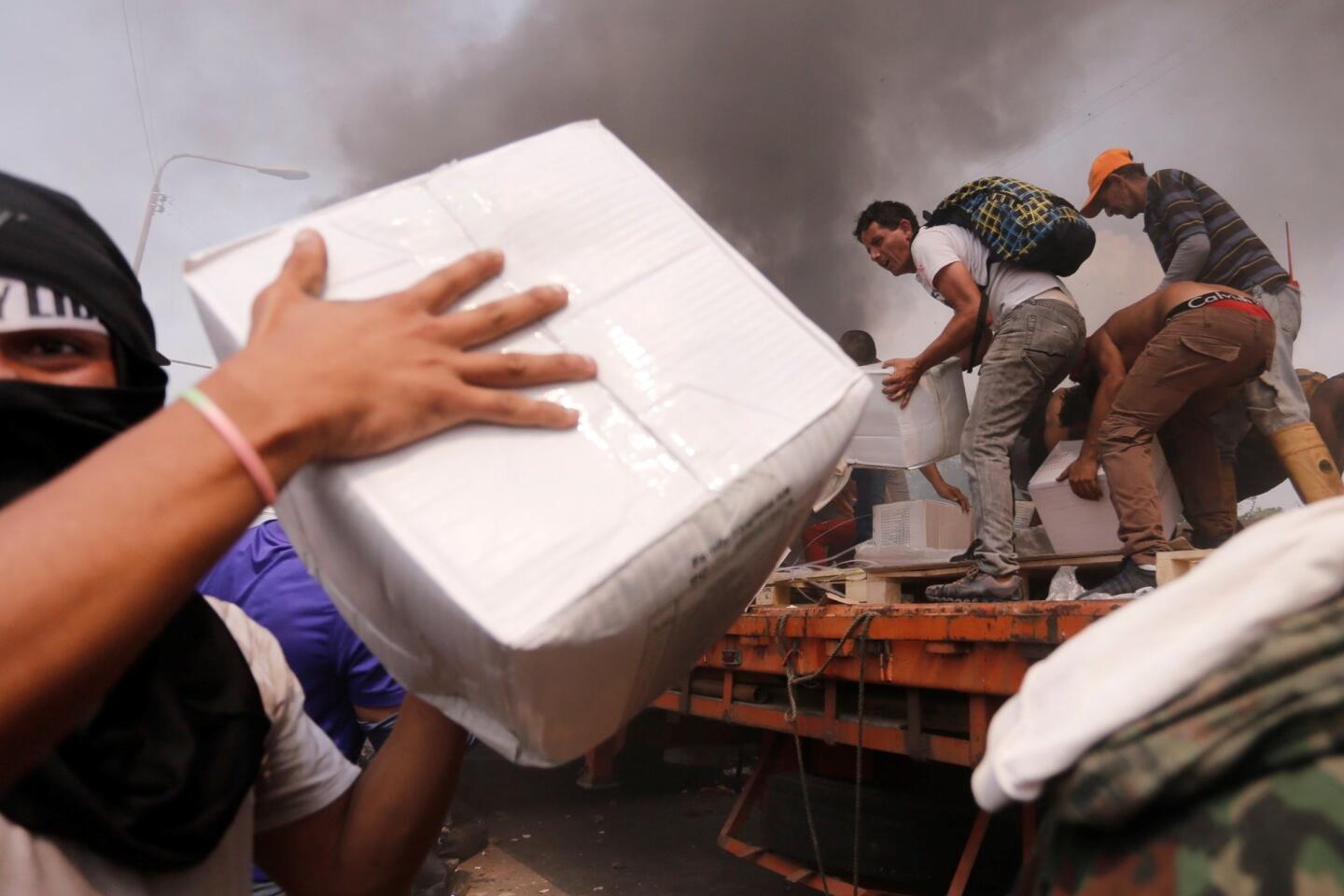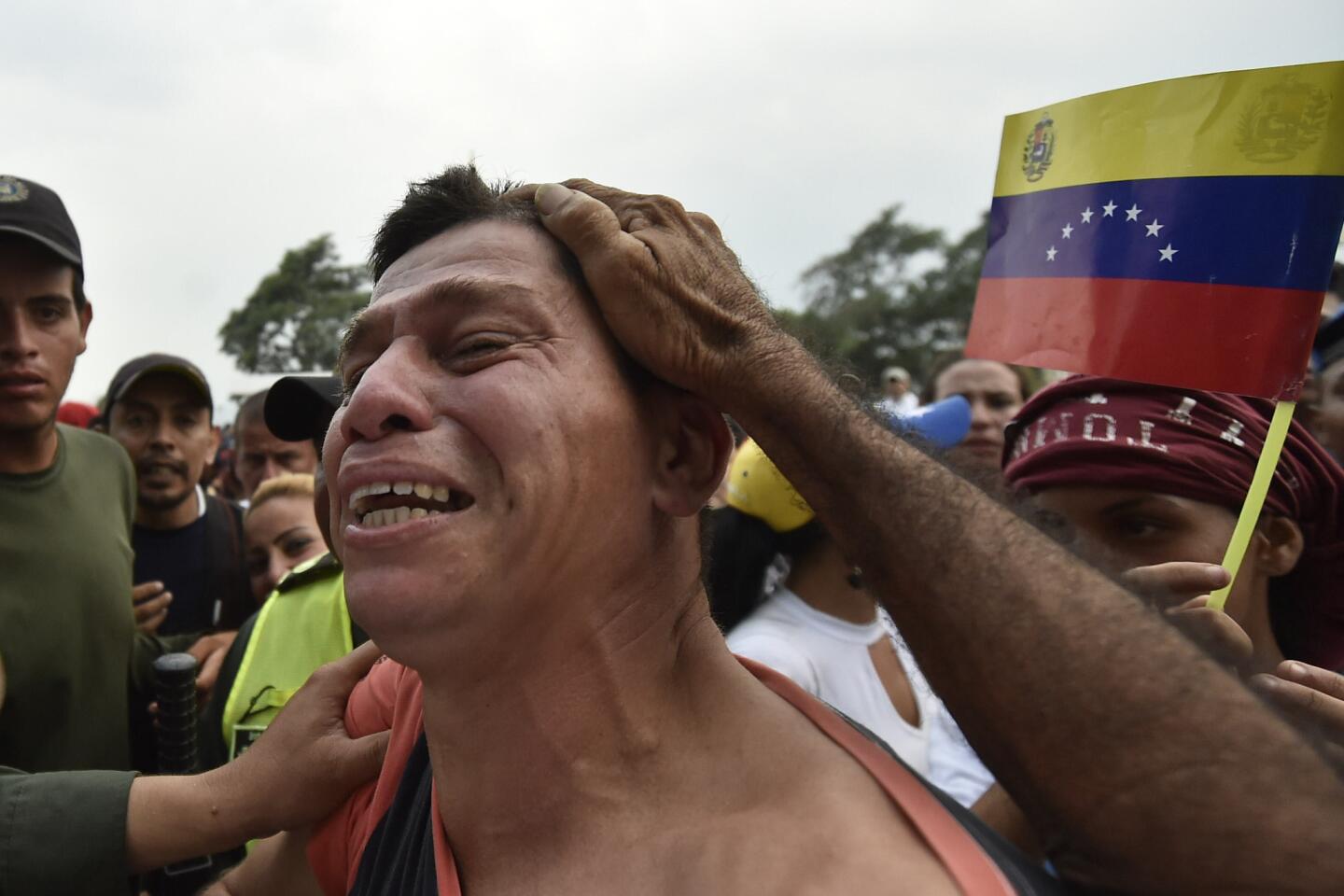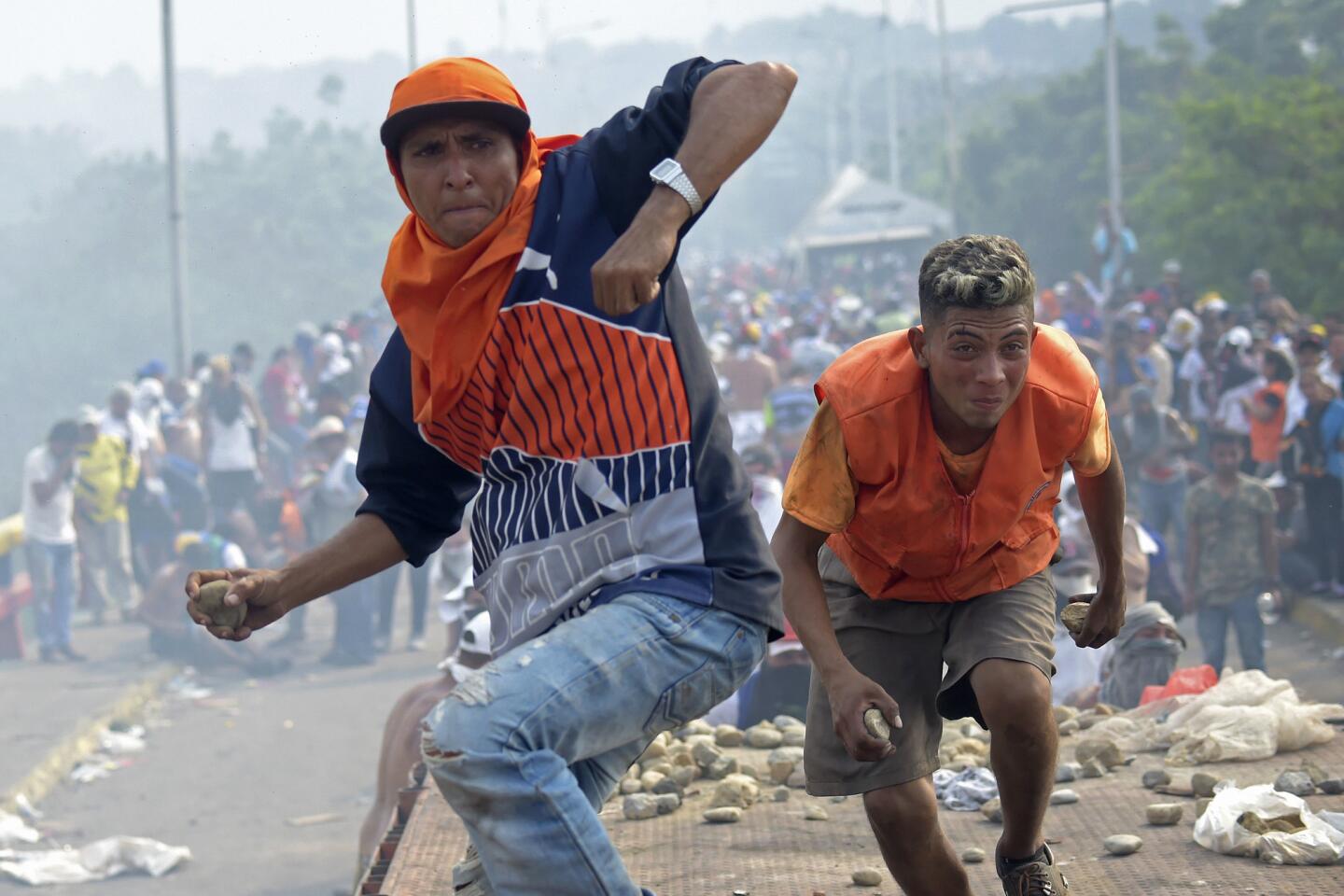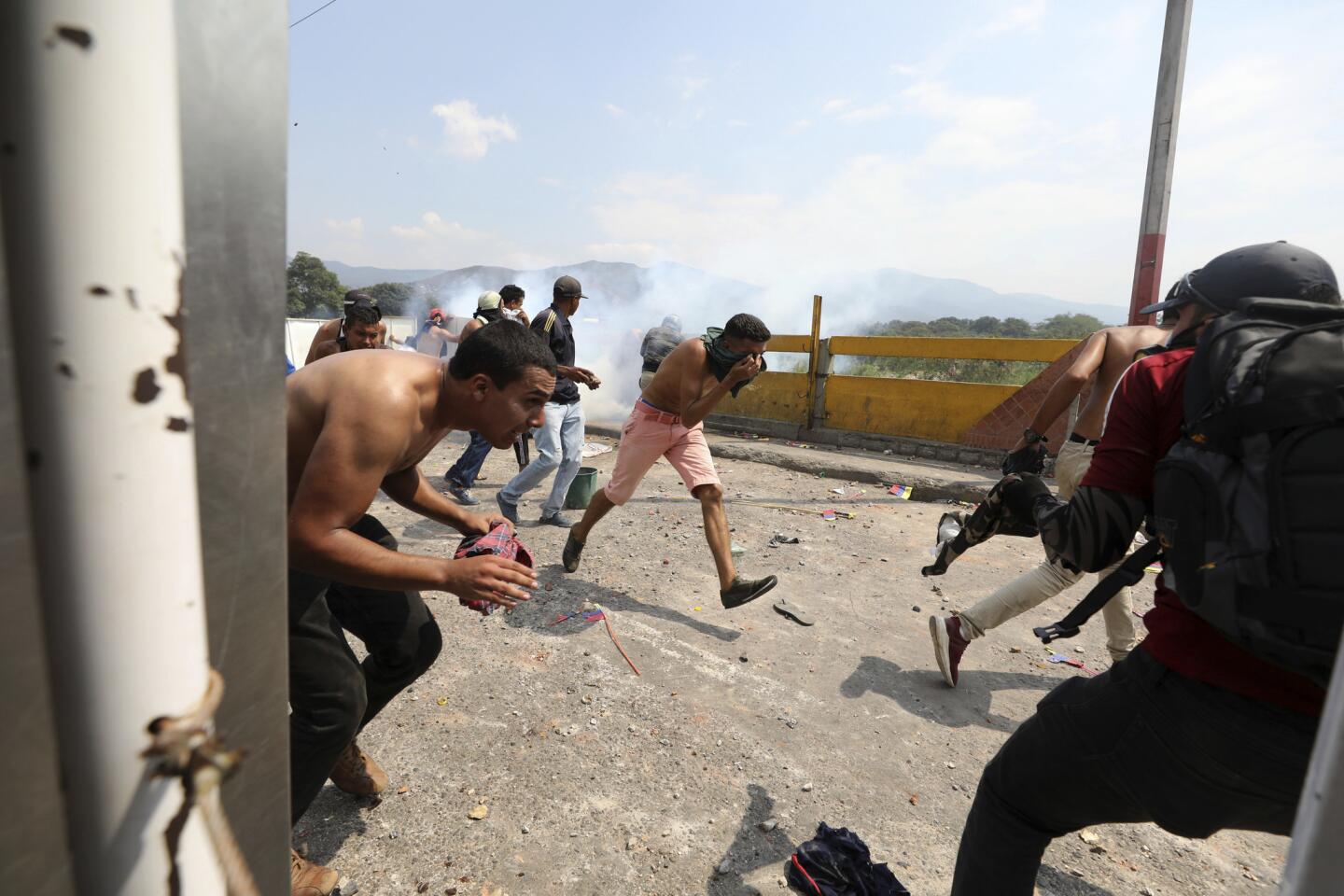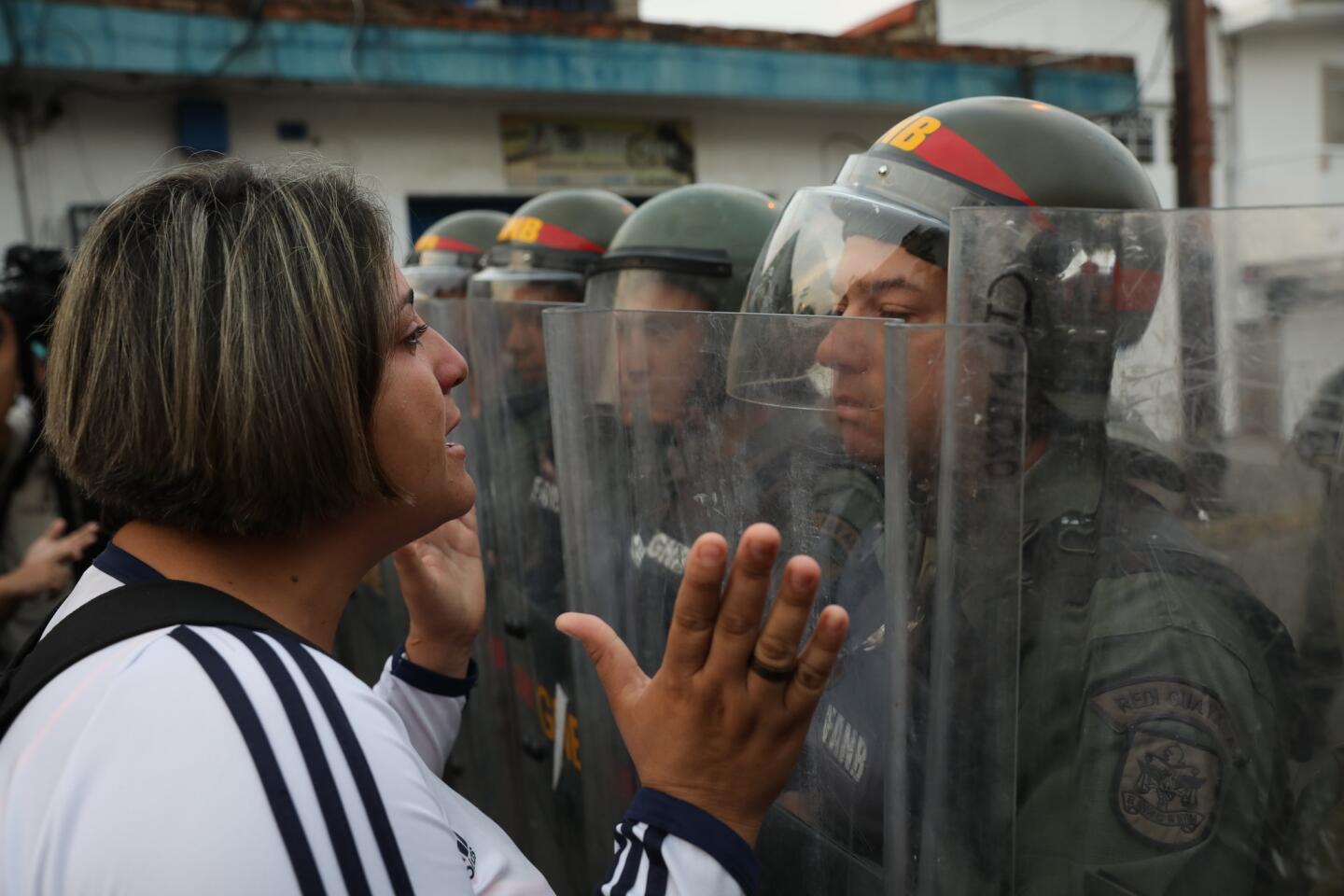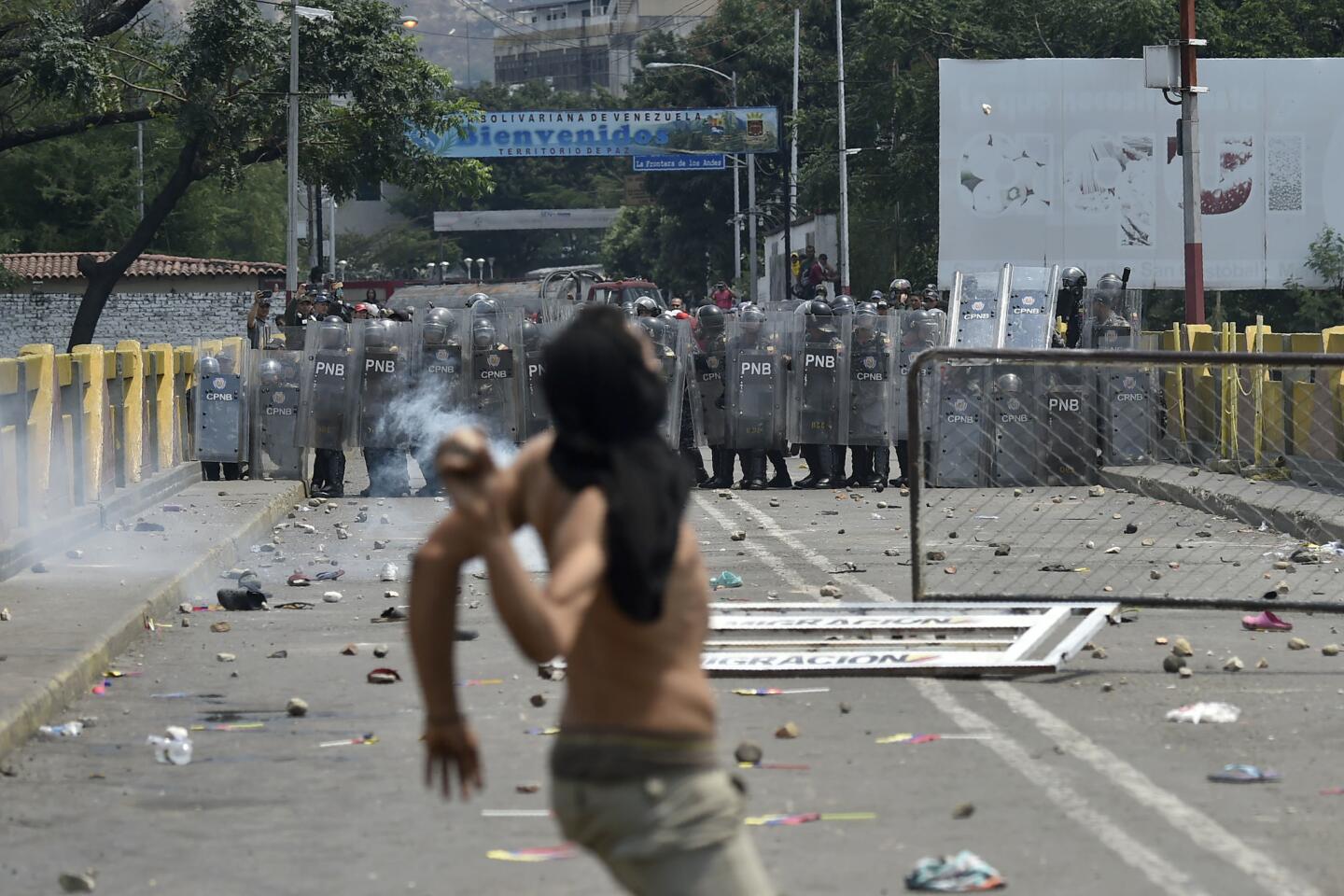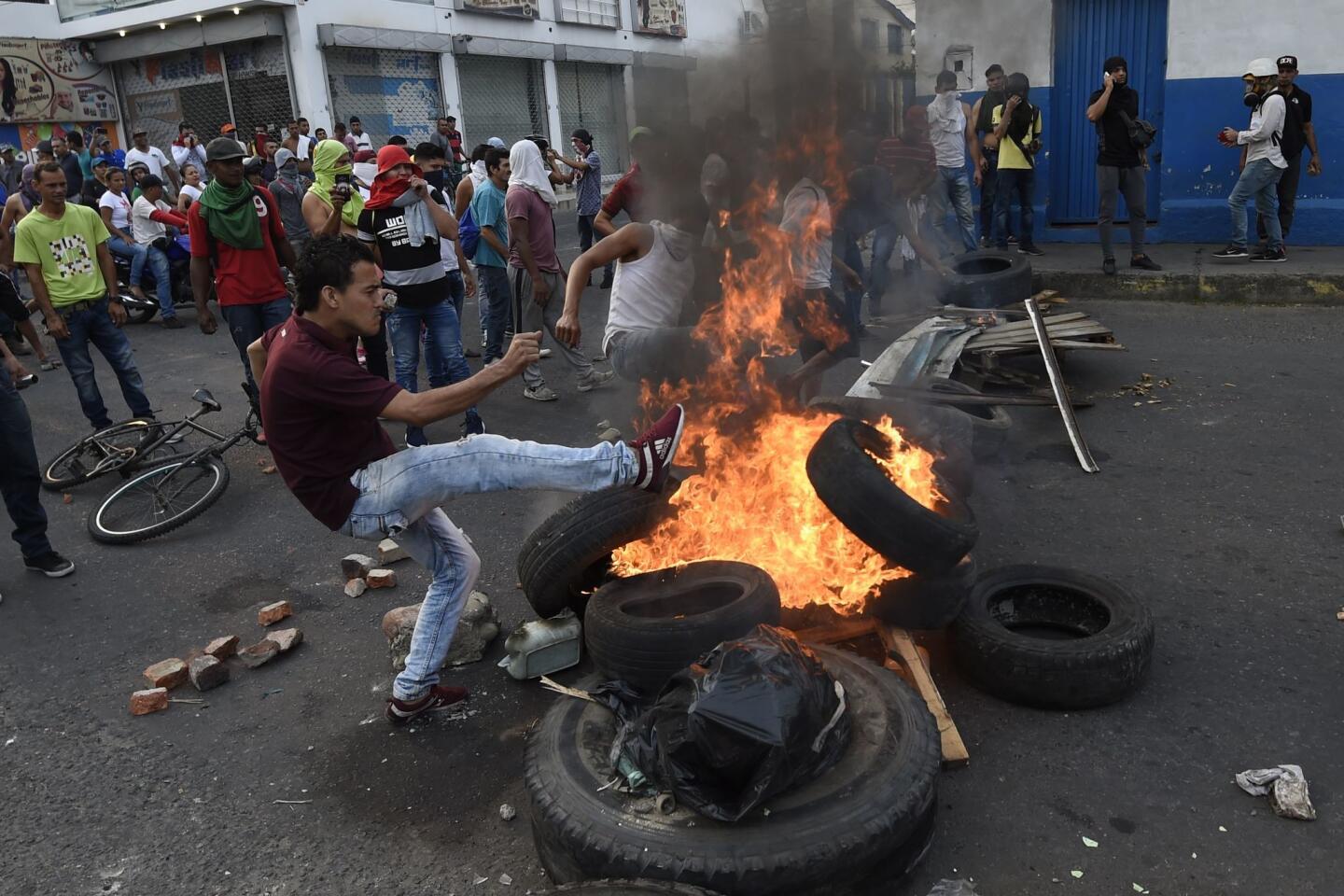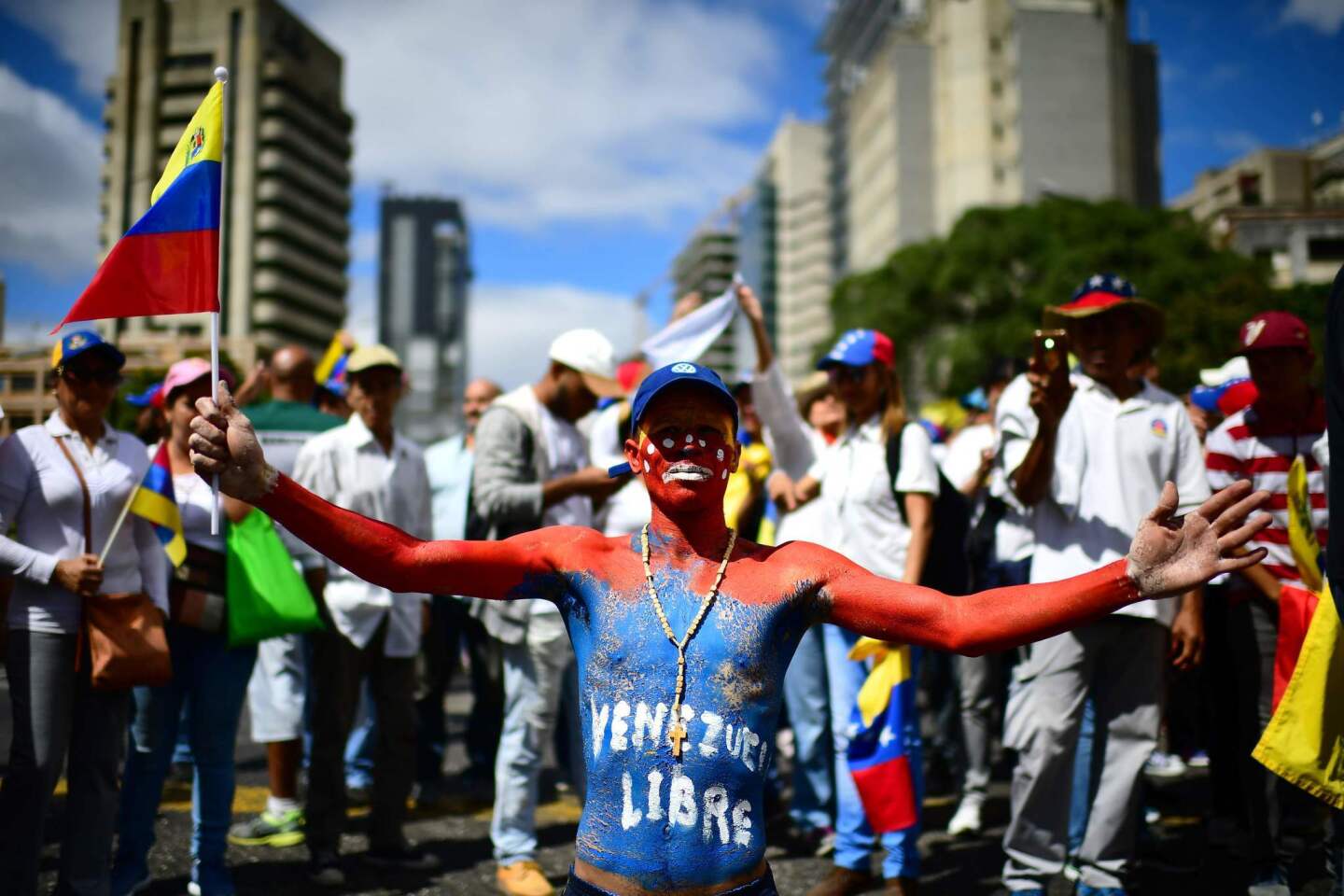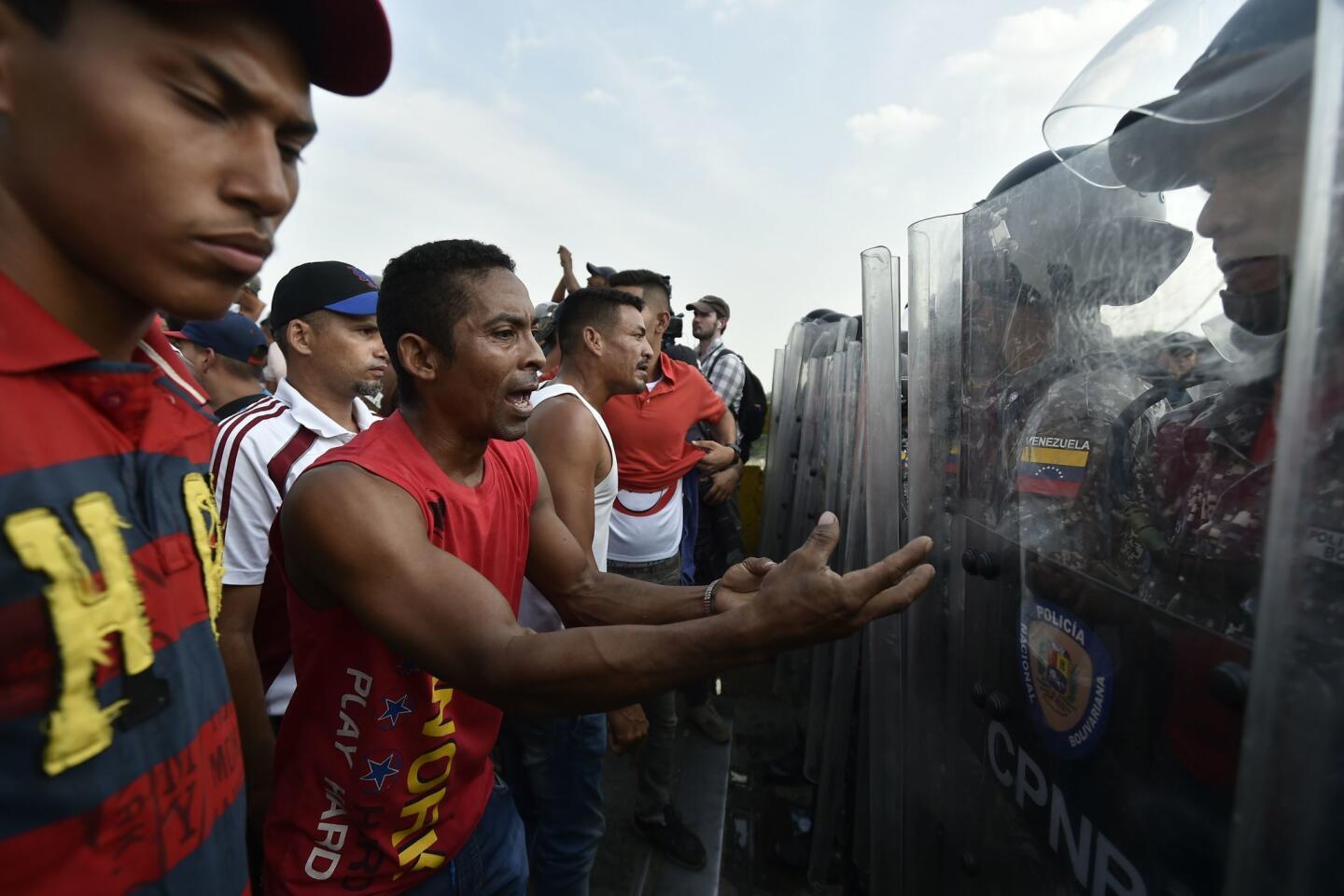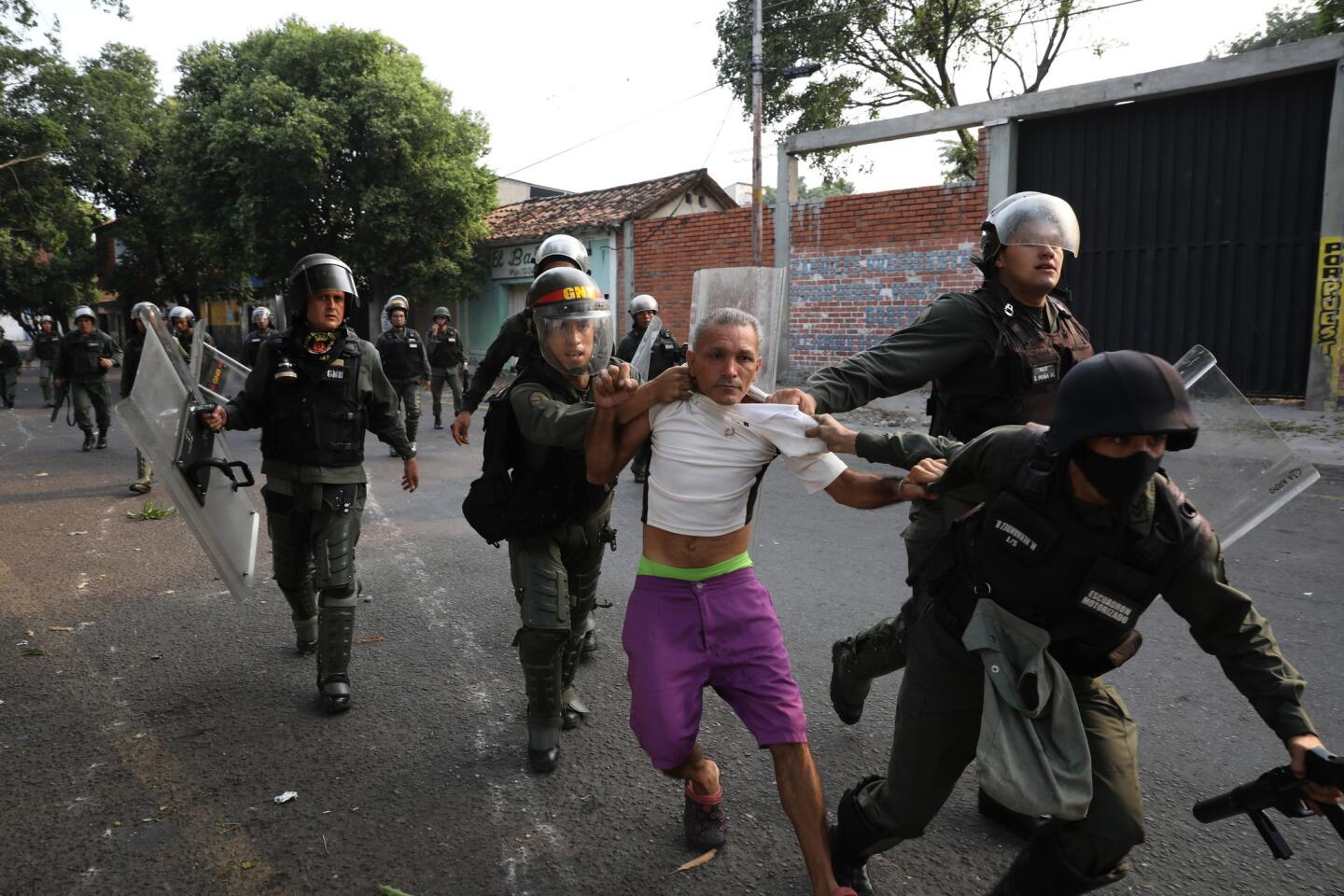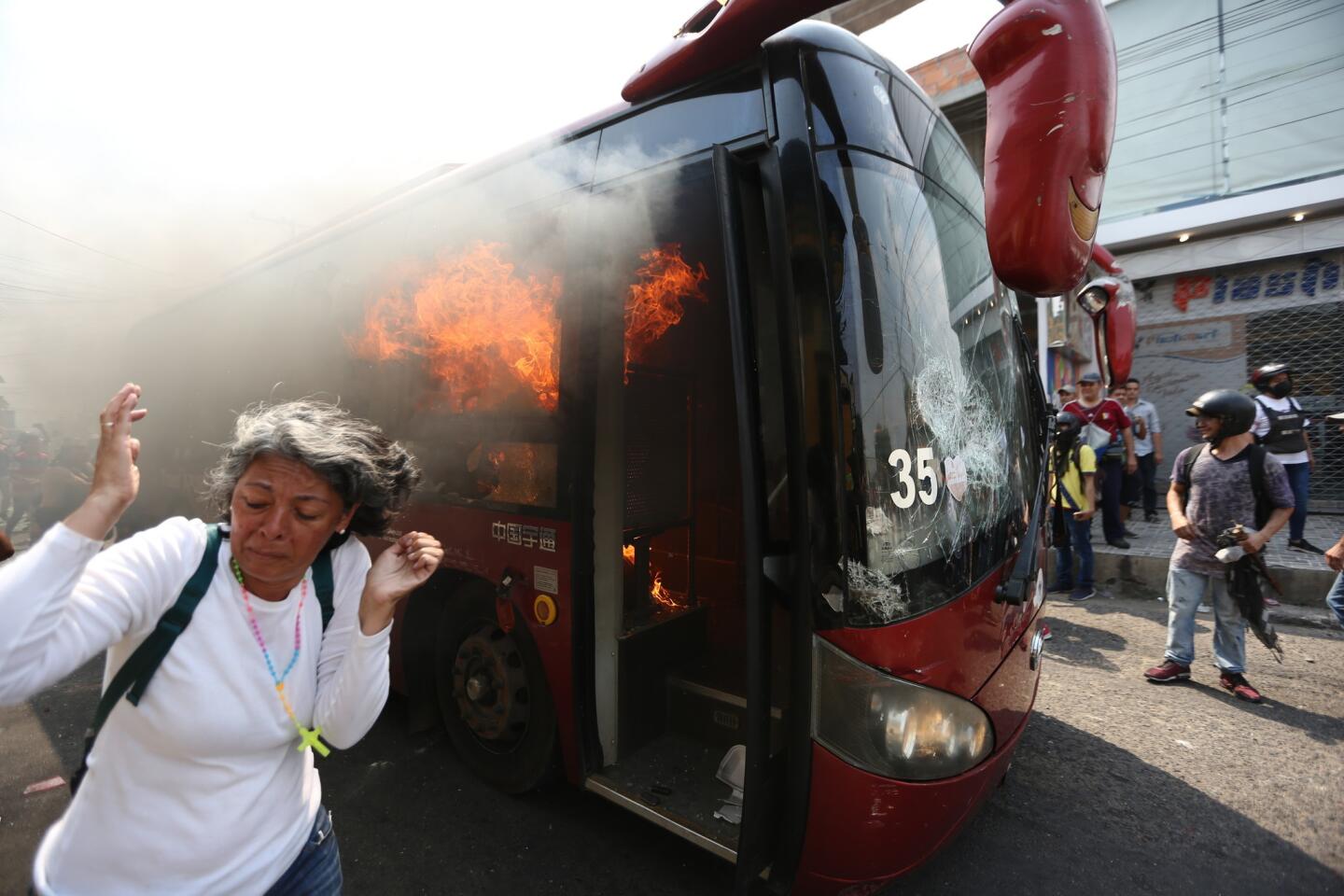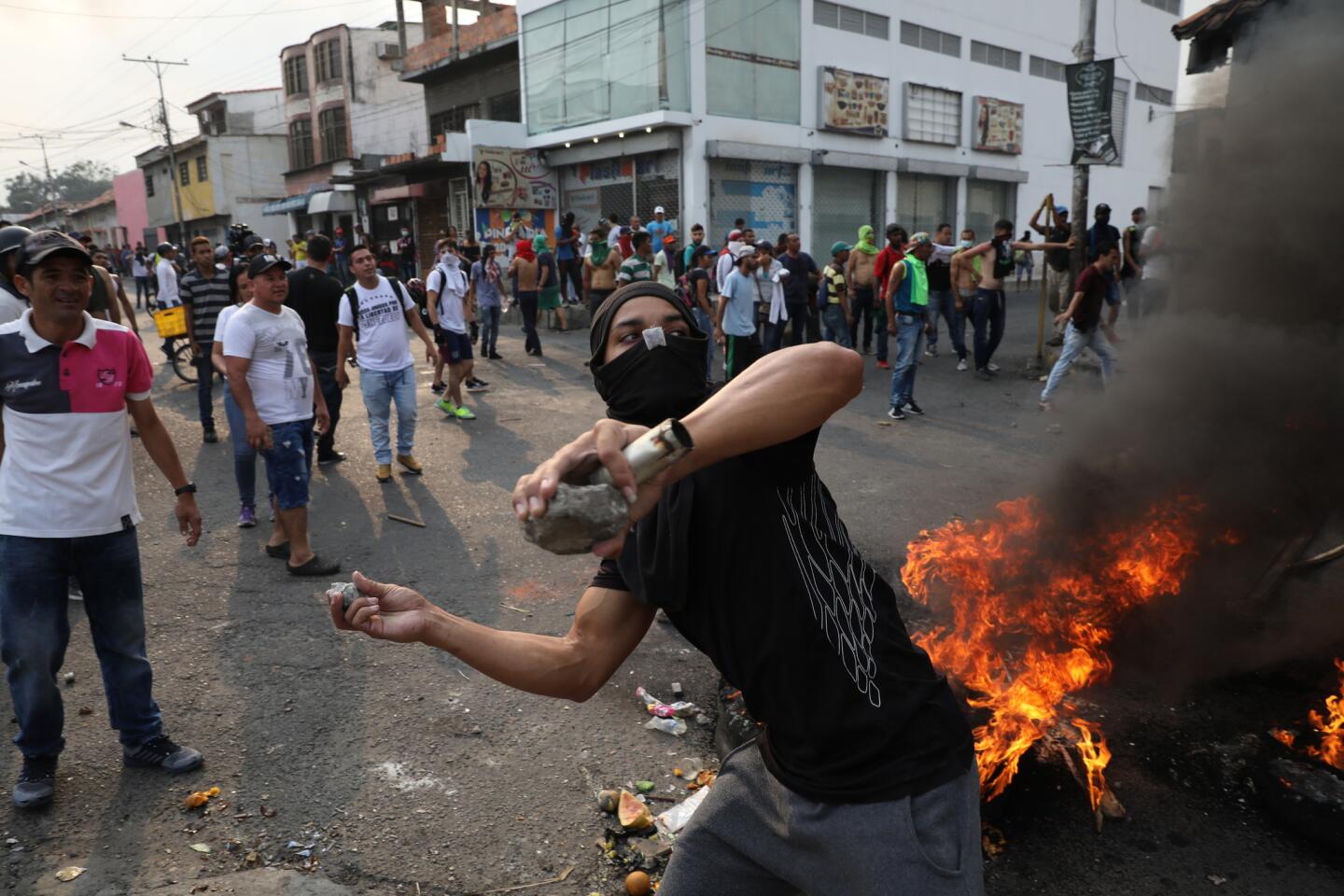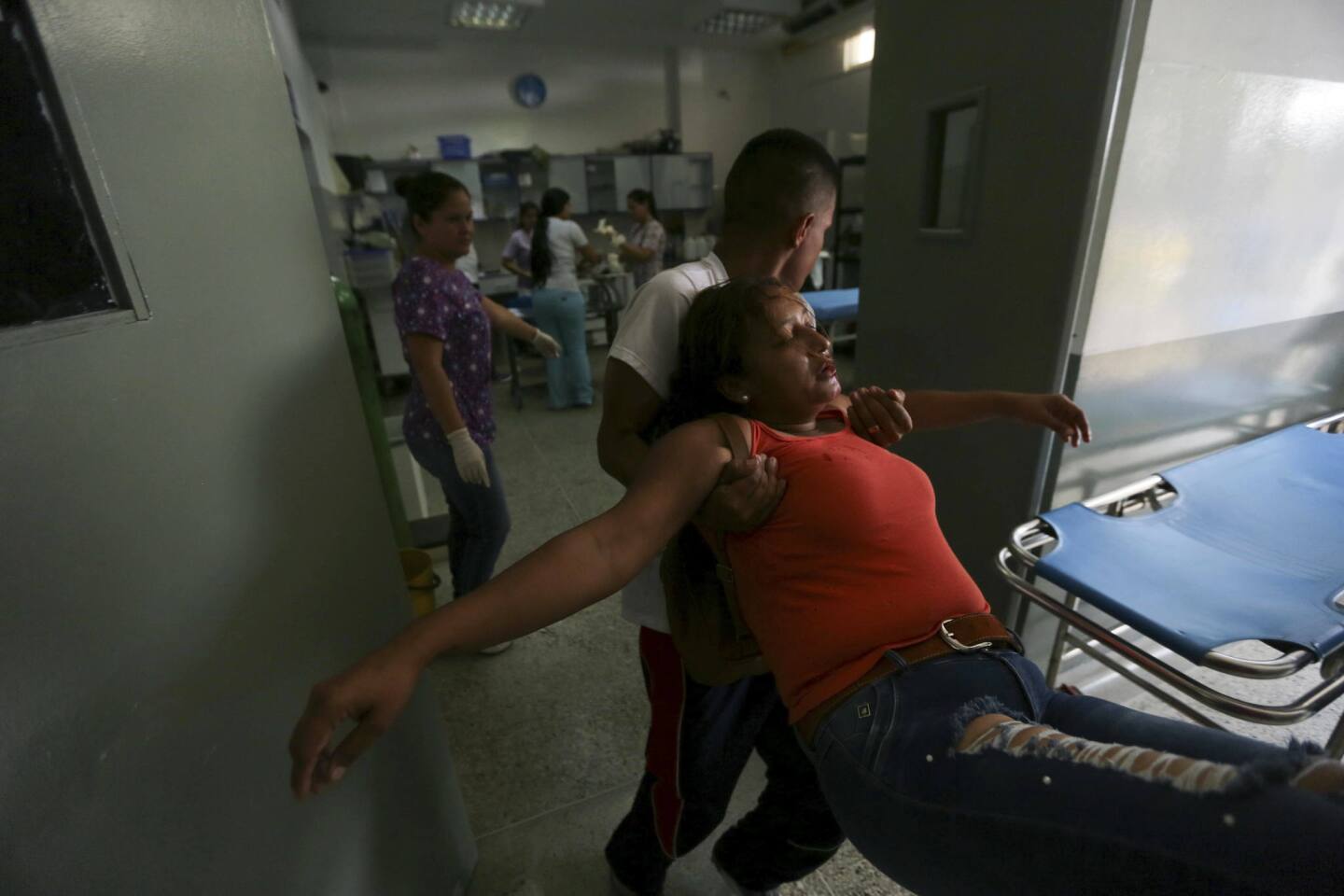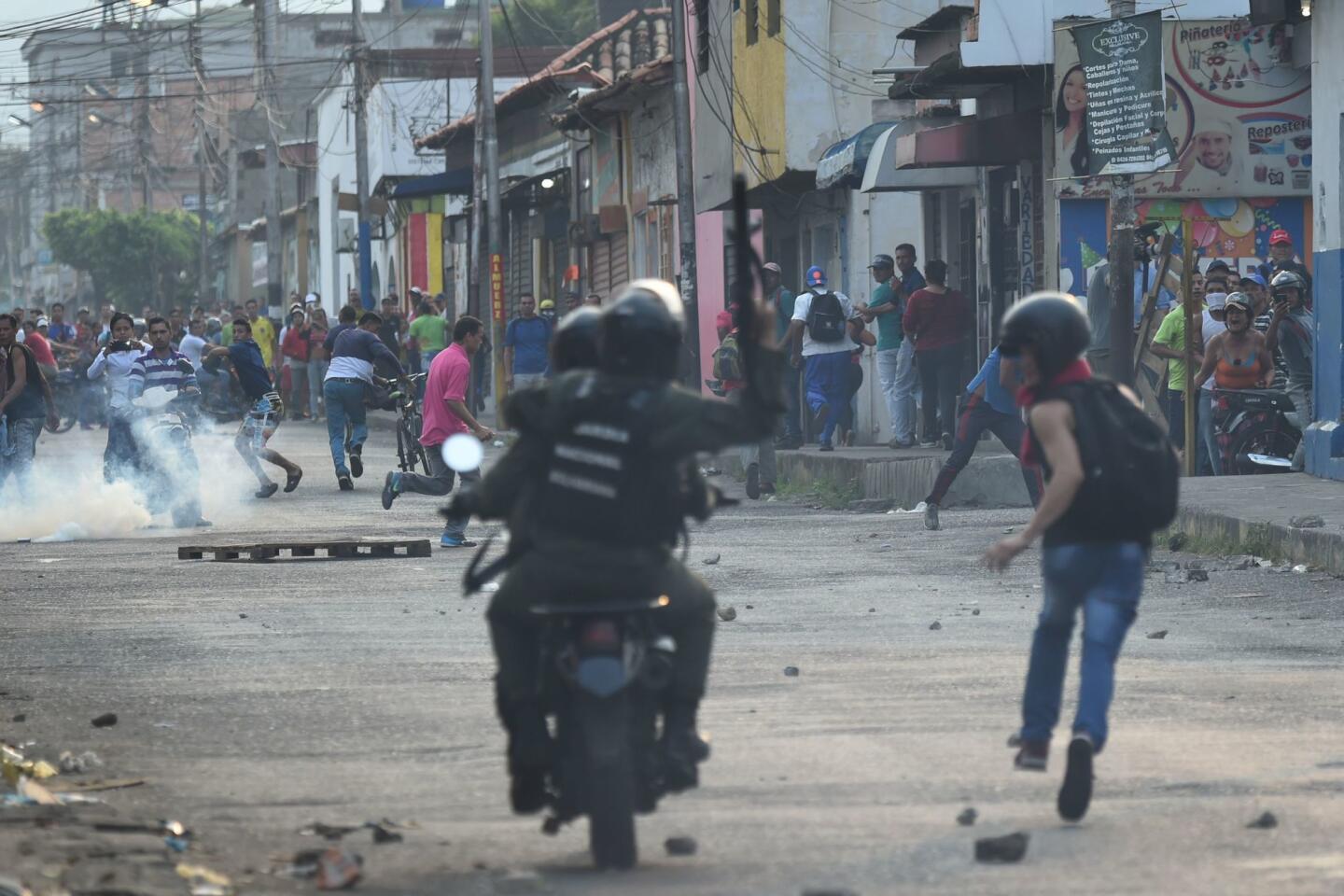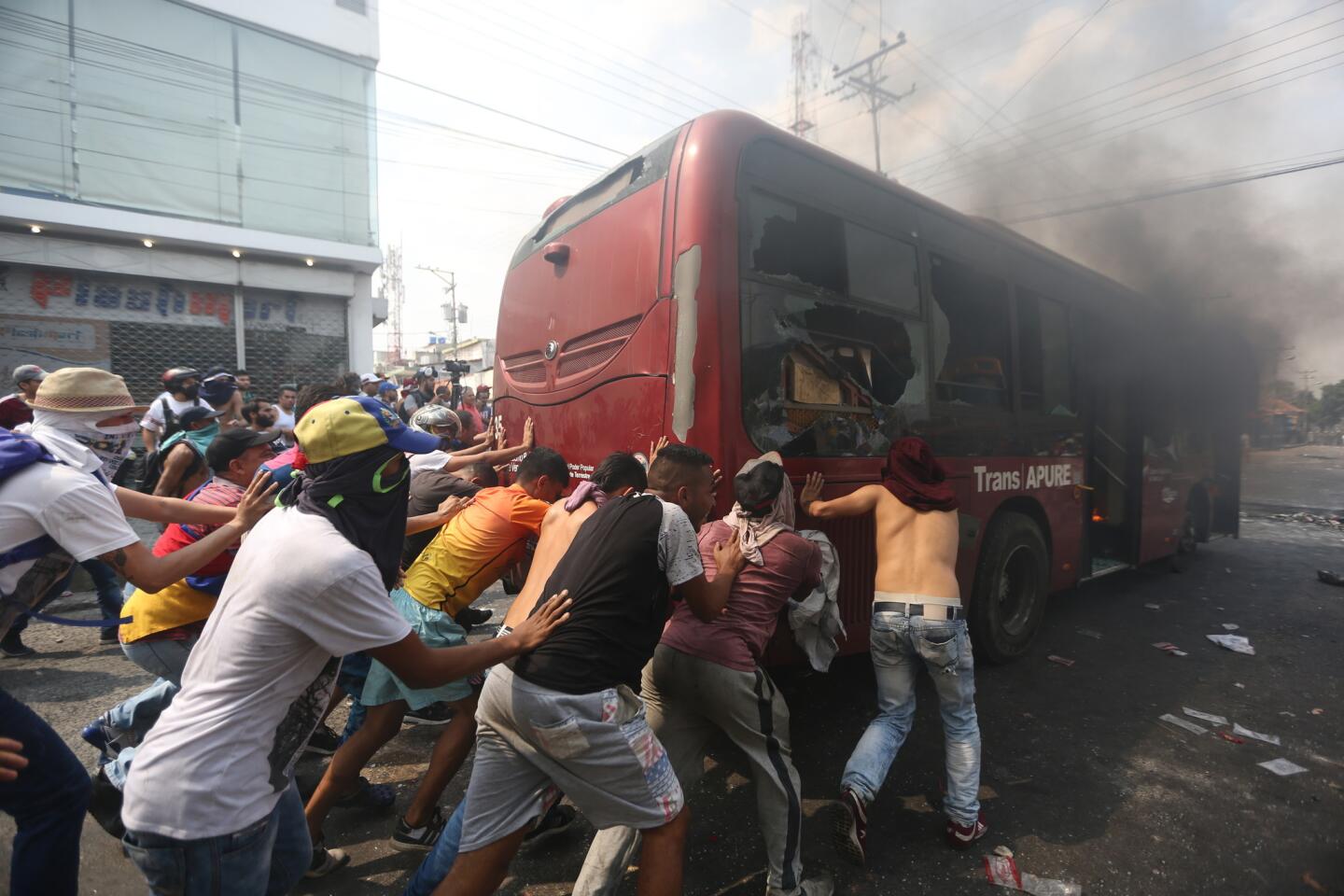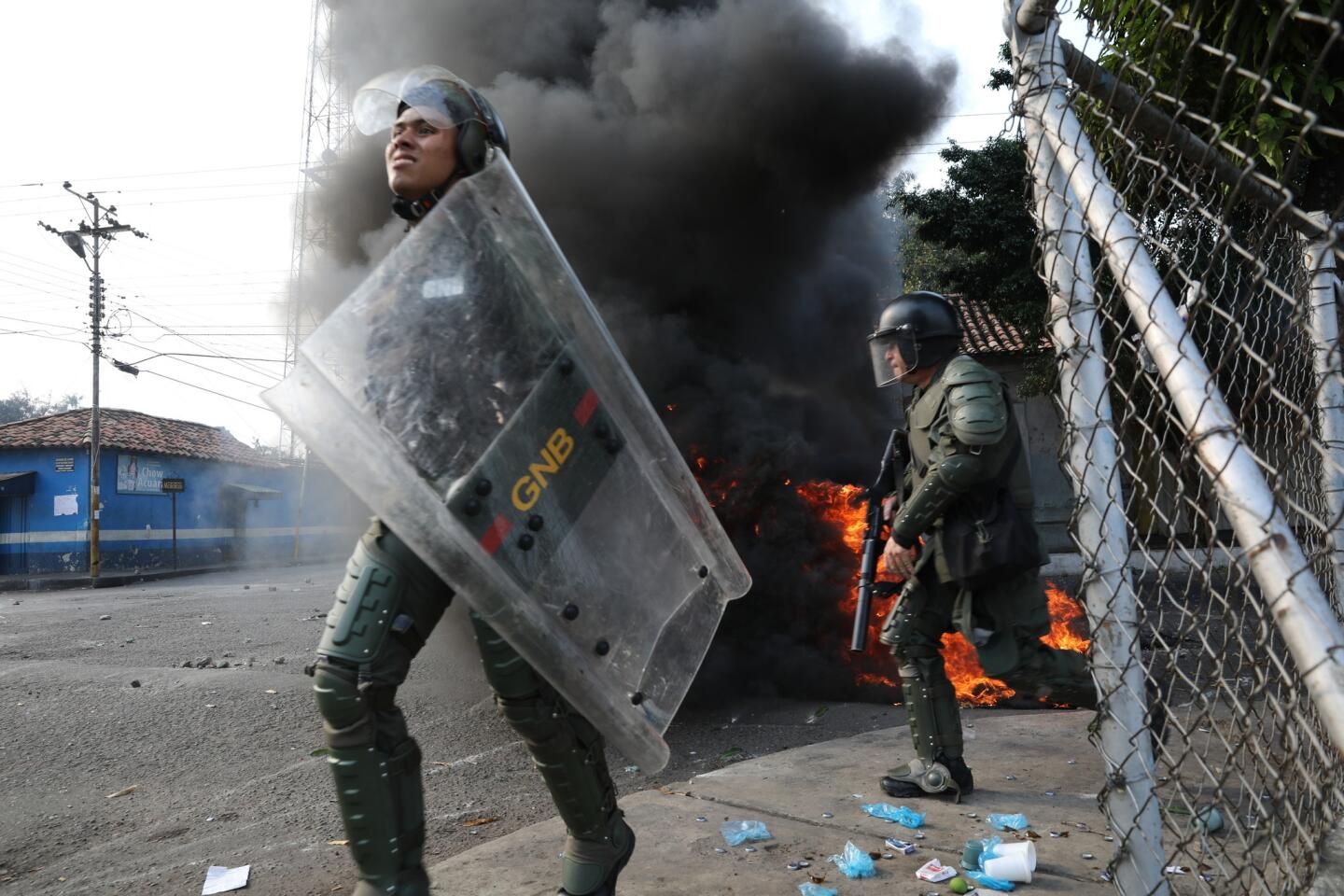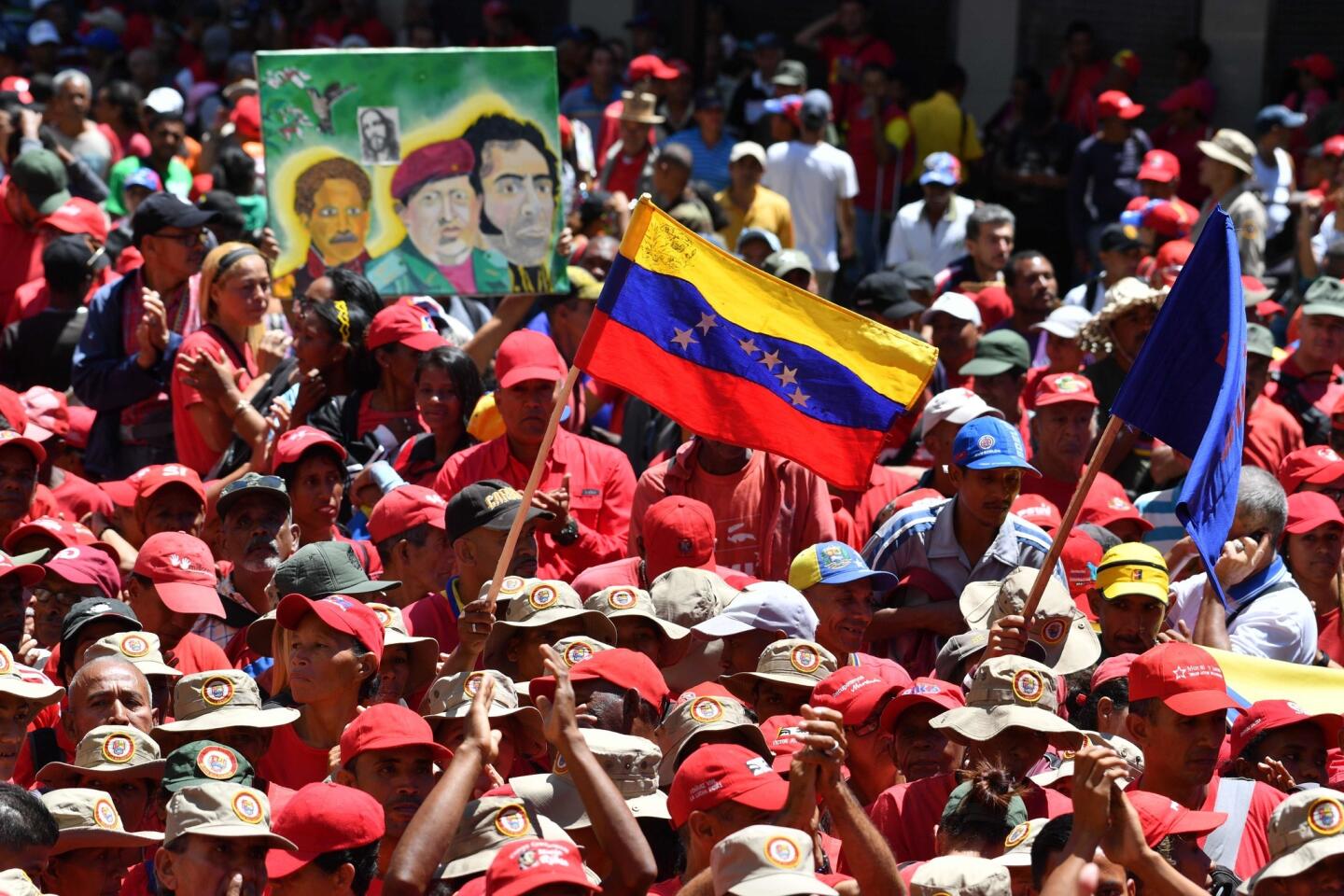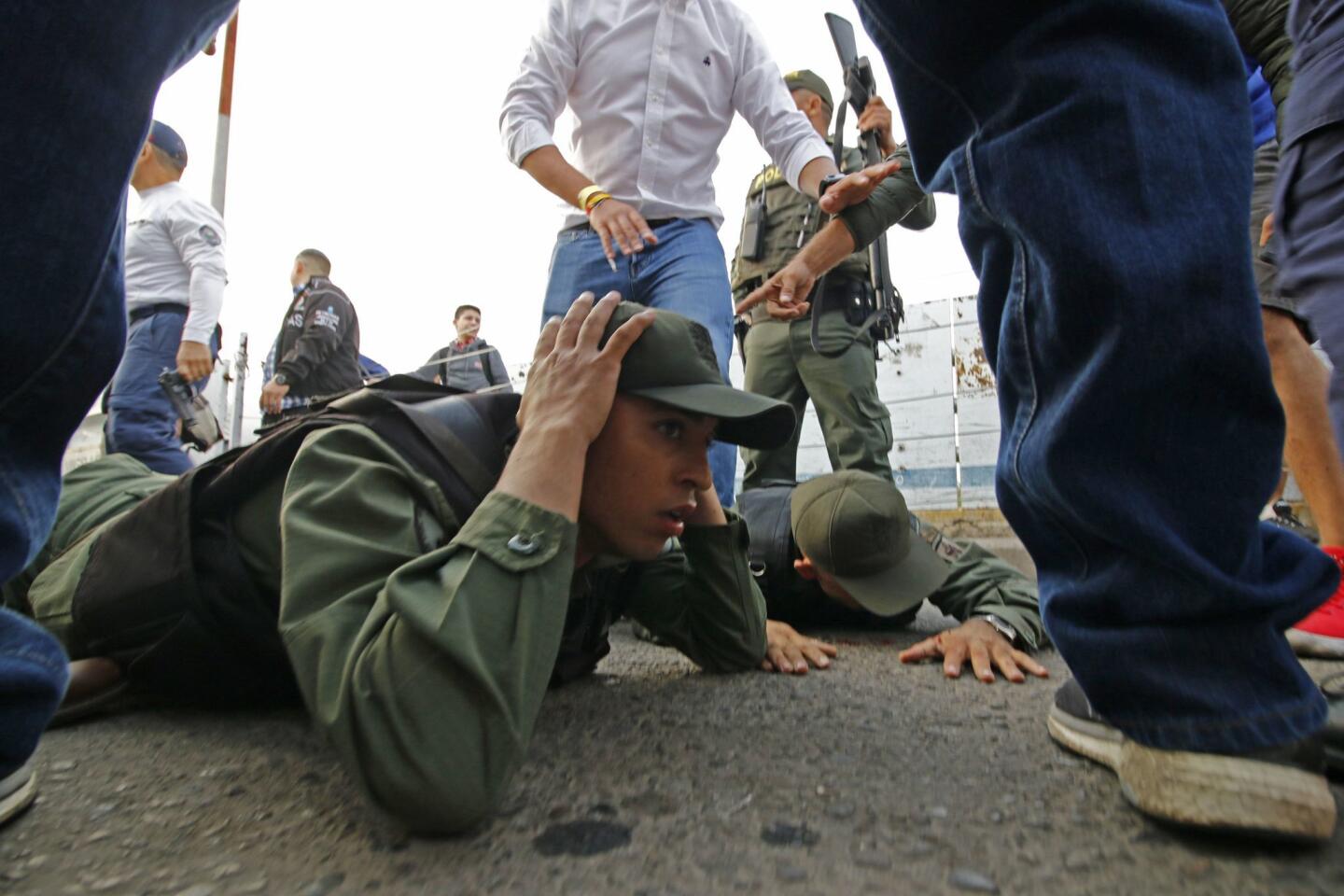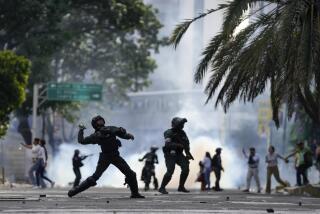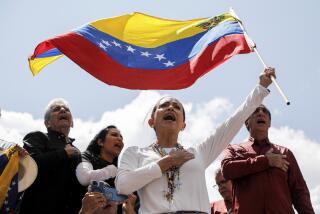Soldiers unleash tear gas amid tension on Venezuela’s borders
Reporting from CUCUTA, Colombia — A much-awaited day that the U.S.-backed Venezuelan opposition called crucial in its push to oust President Nicolas Maduro disintegrated Saturday into a chaotic series of running battles on border bridges, torched vehicles, scores of reported defections from Venezuelan security forces — and Maduro’s decision to cut diplomatic relations with neighboring Colombia.
At least 285 people were reported injured along the Venezuela-Colombia border as Venezuelan riot police posted on bridges and in towns on the Venezuelan side fired volleys of tear gas and clashed with rock-throwing opposition activists seeking to tear down barriers and allow in trucks filled with aid, much of it from the United States. Most of the injured were treated for tear gas exposure, according to Colombian authorities, who said 37 victims were hospitalized.
Meanwhile, at the remote border town of Santa Elena de Uairen along Venezuela’s frontier with Brazil, four people were reported killed and more than 20 injured in clashes between Venezuelan security forces and Venezuelans seeking to facilitate the entry of aid trucks from Brazil, according to the Venezuelan opposition and a regional rights group. Venezuelan authorities did not provide any official confirmation, and details about the incident were sketchy.
At the Venezuela-Colombia border, at least one aid truck went up in flames on the Santander bridge between the two nations, prompting volunteers on the bridge to form a rescue brigade to salvage boxes of aid. Also set ablaze was a bus in the Venezuelan border town of Ureña, where police battled people backing the aid shipments.
At the Simon Bolivar International Bridge, the principal crossing between the two nations, a cordon of Venezuelan riot police fired scores of tear gas rounds and managed to turn back hundreds of opposition activists and four aid trucks attempting to cross.
Young men gathered stones from the riverside below the Bolivar bridge to be flung at Venezuelan police.
Accompanying one aid truck on the Bolivar bridge were dozens of young men and women carrying single white roses and wearing handkerchiefs over their noses to protect them from the wafting tear gas. Others carried multiple stones to throw at Venezuelan police. The vintage Ford truck, with dozens of young opposition activists riding on top of it, many waving Venezuelan flags, was ultimately stopped on the bridge and unable to proceed into Venezuela.
At midday, Juan Guaido, the opposition leader and Venezuela’s self-declared interim president, declared victory — though it was unclear how much aid, if any, made it through to the Venezuelan side from Colombia.
“They said we would not make it to the border,” Guaido said on Twitter. “We all arrived and the people came to receive the aid.”
Later, at a somber meeting here with Colombian President Ivan Duque, Guaido denounced Maduro as someone happy “to burn food needed by hungry Venezuelans,” adding: “Today the whole world saw the worst face of the Venezuelan dictatorship.”
At a rally in Caracas, the Venezuelan capital, Maduro announced his diplomatic break with Colombia, where Duque’s government has worked closely with the Venezuelan opposition and with the Trump administration in efforts to oust Maduro. The Venezuelan president declared that U.S.-orchestrated efforts to mount a coup against him had failed.
“We can’t keep putting up with Colombian territory being used for attacks against Venezuela,” Maduro said, demanding that all Colombian diplomats leave the country shortly.
The aid shipments had become a key component of U.S.-backed opposition efforts to undermine Maduro’s government. But Maduro denounced the scheme as a “show” and a prelude to a U.S. invasion, and closed the country’s borders to Colombia and Brazil.
The opposition voiced the hope that Venezuelan security forces would defect en masse and allow the aid in. But while authorities here said some 60 Venezuelan police and military personnel did defect to the Colombian side, the remaining Venezuelan forces were more than sufficient to block the aid trucks.
Guaido, recognized as Venezuela’s lawful leader by the United States and many of its allies, crossed into Colombia and appeared Friday at a massive concert meant to raise humanitarian aid for Venezuela, which has long suffered shortages of food and medicines. However, Venezuelan authorities had formally banned him from leaving the country, meaning Guaido could face arrest upon trying to reenter Venezuela.
On Saturday, Guaido said he planned to travel Monday to Bogota, the Colombian capital, for a meeting with allied Latin American leaders and with U.S. Vice President Mike Pence.
It was unclear when and how Guaido, who heads Venezuela’s opposition-controlled National Assembly, planned to return to Venezuela, where his proclaimed administration controls no territory or government institutions.
But Saturday’s chaos seemed to shatter opposition hopes that the effort to force aid into Venezuela would be a fatal blow to Maduro’s hold on power.
Shouting “Libertad!” (“Liberty!”) and waving Venezuelan flags, the pro-opposition demonstrators on the Simon Bolivar International Bridge had little protection from noxious gas fired by Venezuelan forces and soon beat a hasty retreat.
Behind a cordon of Venezuelan riot police on the bridge was a large, boisterous group of government supporters dressed in red, the traditional color of Maduro’s socialist party.
The pro-government activists also hoisted a giant banner of Ernesto “Che” Guevara, icon of the Cuban Revolution, and shouted “No pasaran!” (“They will not pass!”), signaling their determination that the aid would not cross the border.
On the bridge, opposition activists pleaded with Venezuelan police to defect and let in the cargoes of food and medicines.
“Think of your families — they are starving!” one opposition demonstrator urged a Venezuelan police officer among a phalanx of security forces posted on the bridge with helmets and plastic riot shields.
“Did you have breakfast this morning?” another said. “What future do your children have in a dictatorship?”
Esperanza Rodriguez, 49, who said she served as a Venezuelan police offer for 19 years before leaving the force, drove six hours to the border to urge the security forces to allow the aid to be delivered.
“I know how the police suffer too,” said Rodriguez, who said she now earned her living buying goods in Colombia and selling them in Venezuela. “They hardly earn enough to eat. But they’re afraid to lose the only job they have.”
The aid, she added, “is just the first step. We need to get rid of Maduro and his corrupt government and start a new Venezuela.”
Contributing to this report were special correspondents Mery Mogollon in Caracas, Venezuela; Chris Kraul in Bogota, Colombia; Cecilia Sanchez in Mexico City; Liliana Nieto Del Río in Cucuta; and Times staff writer Tracy Wilkinson in Washington.
More to Read
Sign up for Essential California
The most important California stories and recommendations in your inbox every morning.
You may occasionally receive promotional content from the Los Angeles Times.
